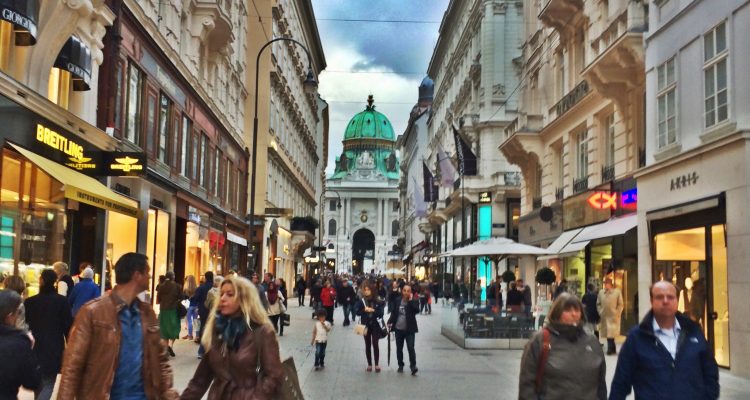Traveling is my greatest passion, and over the past ten years I’ve had the opportunity to do plenty of it for both business and pleasure. During the past two to three years I’ve started looking at travel through a very specific lens: what seems to work universally, are we missing it in Wheeling, and – if so – could we somehow adopt whatever “it” is in order to improve the feel, experience, and fiber of Wheeling?
Throughout my travels, one particular deficiency that is common in all vibrant, inspiring cities – both large and small – has stood out: Wheeling lacks a walkable, car-free promenade or pedestrian mall that serves as both a social and economic hub.
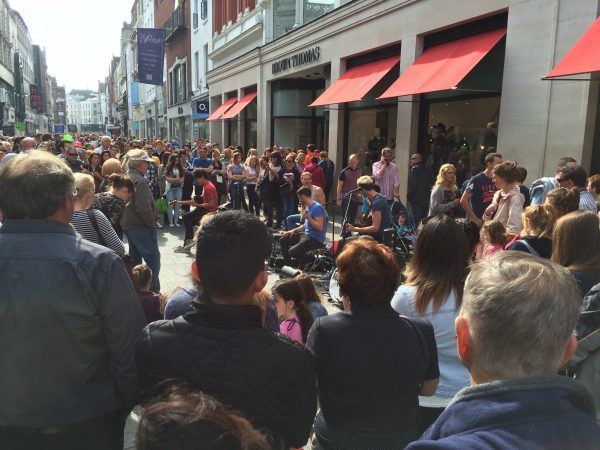
Pedestrian malls serve as open-air market districts which people gravitate towards for shopping, dining, strolling, and entertainment sans the hassle or danger of automobiles. In Cleveland, it’s trendy East 4th Street. In Winchester, VA it’s the casual Loudoun Street Walking Mall. A much more famous American example would be the San Antonio River Walk; but even the best America has to offer (at least from what I’ve seen) pales in comparison to the gems western Europe has put together.
Munich and Vienna have entire pedestrian districts surrounded by historical, well-preserved buildings that anchor their city centers – the sprawling 900 meter Marienplatz Pedestrian Zone and the 500 meter Karntner Strasse Walking Mall, respectively, are packed with tourists and locals day and night, rain or shine. Glasgow, Scotland fixes itself around Buchanan Street, and a trip to Dublin, Ireland wouldn’t be complete without a crawl down the Temple Bar District, or Grafton Street.
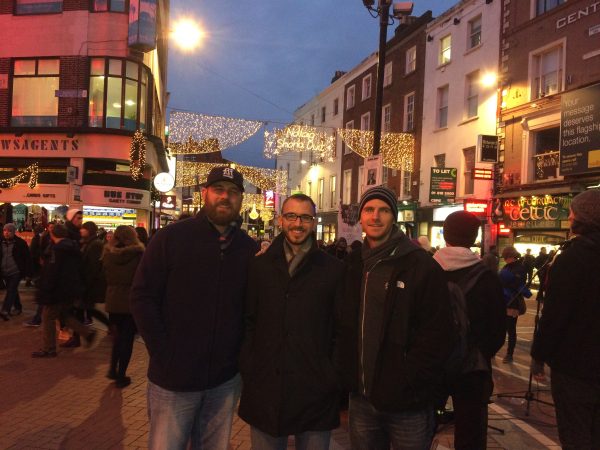
As great as all those spots are, the most amazing walking mall I have ever strolled lies in a city that – in some respects – is very comparable to Wheeling. Galway, which is positioned on Ireland’s western shore, lays claim to the Latin Quarter, a 450-meter promenade that connects Eyre Square (a small public park in the center of town) to where the River Corrib meets the lock system of Galway Bay. From the moment you step into the Quarters on Quay Street, you are met with window shoppers at countless boutiques, outdoor dining patios, more pubs than I was able to visit, street performers, artists capturing nightlife on canvass, bright lights, live music, and more smiles than you could count.
The Quarters, as well as Eyre Square, not only serve as commerce, dining, and entertainment hubs, but as social hubs as well. I cannot tell you how many groups of people I have observed mid-street just standing, talking, and laughing.
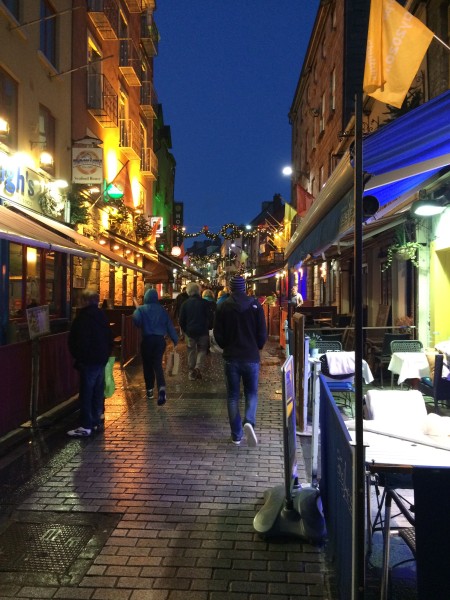
Due to the Quarters being surrounded by continuous buildings on both sides (the way the western side of Centre Market currently flows) the windy streets make you feel safe, and it makes the walk from A to B seem longer than 450 meters. By comparison, the walk along Water Street from WesBanco Arena to the playground at the north end of Heritage Port is approximately the same distance.
Which brings me to my point: close your eyes and imagine a Water Street devoid of cars, redeveloped with bricks, additional trees, cobblestone walkways, benches, statues, and iron signs hanging over entry points. Imagine street vendors to the west along the wall that separates the sidewalk from Heritage Port; then imagine rows of sidewalk-level buildings on the east side built in a style that evokes Wheeling’s Victorian history instead of parking lots, bank driveways, and chain-linked fences.
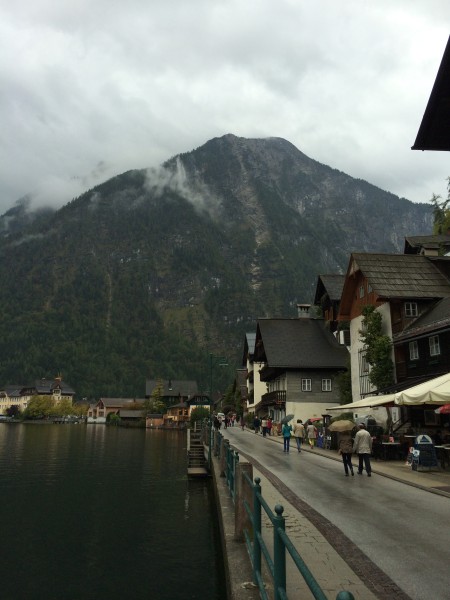
Imagine turning the corner to Water Street on any given Friday or Saturday night and witnessing hundreds of people who choose to get out and stroll from place to place, rain or shine (umbrellas in hand), as opposed to hundreds of people getting in their cars and driving from blacktop lot to blacktop lot at the Highlands. Imagine young musicians performing for the crowd, hoping for a tip or a compliment here or there. Imagine a pop-up magic show.
Water Street, admittedly, would be a heavy lift. A large-scale public/private partnership would need to take place, with the key to that being a private developer with vision, passion, and – most importantly – deep pockets. But aren’t there already spots in Wheeling where a walkable promenade could be tested?
A very small portion of Market Street already closes down to traffic on Friday nights in front of Market Vines during a summer concert series, and the block is always packed (presumably because we are starving for this type of experience). Portions of Centre Market, from Towngate Theatre to Casa di Vino and around the block, are already seeing an uptake in development. Perhaps redeveloping the area into a true pedestrian mall would push the district further quicker than anyone could anticipate?
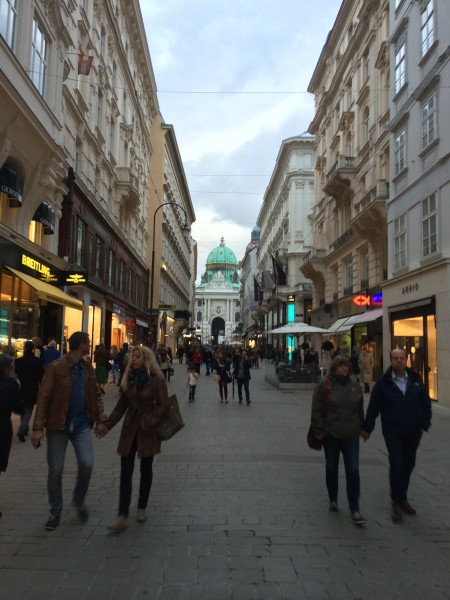
If not Centre Market, perhaps WVDOH could be convinced that some stretch of Market Street from 14th to 10th could be a prime candidate for car-closure and redevelopment, all the while using Loudoun Street in Winchester as a guide. Most of the existing storefronts and buildings in this section of town are still viable, or present themselves as opportunities should a walking mall be established.
With this topic there is much to be discussed, debated, and considered, and I hope that this piece will bring the idea to the forefront of readers’ and leaders’ minds to spur a conversation.
In the end, all I know is that many other cities in many other states or countries have seen the idea of a well-designed pedestrian walking mall benefit their downtown. When all else isn’t equal among demographics, local economies, or cultures, the one common denominator seems to be this: that the ability to congregate and do business in a safe, inspiring, walkable environment is simply appealing to the human spirit.
Maybe, in the end, a pedestrian mall is as make-sense as the famous Field of Dreams line, “Build it, and they will come.”
(Photos by Derrick McKee)


